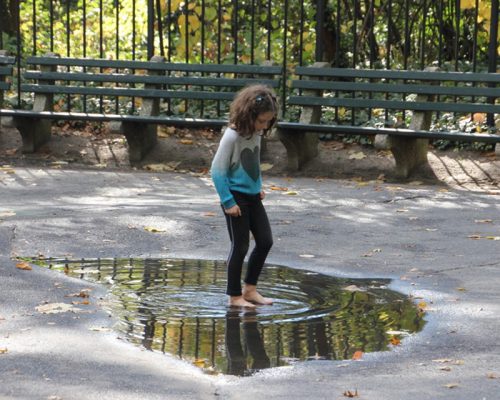
Nov 09 2021 Taking Photos—Telling Stories
Savor and share memories by taking photos of the times you and your grandchildren spend together. Sometimes the key to taking great photographs is in changing the way you think. Digital photography — especially when you have a smart phone — makes it easy to test out new photographic skills. Just delete what displeases you!
Here are five tips to help you improve your photo-taking game.
1. Think like a storyteller.
When you read a picture book, the illustrations or images help tell the story. Sometimes they capture a mood, an action, or an interaction; sometimes they capture a pivotal detail. Your photographs can do the same. In your interactions with your grandchildren, think about what is taking place that you want to capture. Take multiple pictures of different elements of that scene. Each will tell something different. Sometimes an unsmiling face or a head turned away from the camera tells a part of the story worth remembering.



2. Focus on the details.
Our instinct is often to take pictures of smiling faces all looking at the camera. Those are likely the ones you tend to show your friends. When you’re telling a story, focus on the details. Zoom in on hands, faces, leaves, feet — whatever details will bring that moment to life. In this case, it’s a reflection in the sunglasses. You might be surprised by the story that emerges when you do.



3. Change your point of view.
If you’re physically able to, change the relationship between the camera and the subjects. Things can look dramatically different if you’re able to see them from below, or above, or in a different angle of light. Try tilting the camera slightly to one side or another.
In this photo, stepping to one side and angling the camera, rather than shooting straight on, creates a better view of the children making havdalah. Look to make sure your subject is fully inside the photo frame.



4. Please pass (on) the cheese.
The beauty of digital photography is that you can take dozens of photos of the same scene, or different elements of the same scene, and sort through them later to find the keepers. It’s okay to ask for smiles and poses on occasion. Try not to get so caught up in staging the scene and perfect poses that you miss capturing what’s unique about this day or stage of life.
Be an observer: watch the action rather than directing it. In these photos, puddle jumping, sand play, and comedic timing are elements of these kids’ personalities captured in images during a trip to Central Park.
Remember to make yourself part of the story by interacting with your grandkids in the moment so that the images help evoke that mood. When your grandchildren look back at these photos, they will remember that you shared the time with them.



5. Keep the best, delete the rest.
When the day is done, take some time to scroll through the photos. Be ruthless. Delete anything that is out of focus or too far away for the viewer to tell what’s happening. Click back and forth between similar photos and pick the ones you like best.
Some elements can easily be fixed through basic photo editing tools (shadows, color saturation, exposure) and some cannot (clothing mishaps, closed eyes, back lighting, and elements of the background that appear to be sticking out of someone’s head). Nice smiles and perfect hair can be visually appealing; still, focus less on what people look like in the photo and more on the story the photo is telling.


Photos help you hold onto and share memories. They tell the story of your lives together. It takes many images to tell the full story.
Using these tips, you will capture the real story of your grandchildren growing up, full of personality and curiosity — as well as smiles.
Bonus tips
- Consider how you might want to use the photograph. Photos used for phone wallpaper images ought to be taken in portrait (vertical) mode. Photos to be shared on websites, digital photo frames, or computer monitors are best taken in landscape (horizontal) mode. Photos shared on social media are often square.
- Some people like to send photos to one of the many online photo book services to make physical books to share. Some like to share them online, using captions.
![]() Educators, click HERE for a guide to using this experience in intergenerational programs.
Educators, click HERE for a guide to using this experience in intergenerational programs.
Stephanie Fink (she/her) is associate director, family engagement with the Union for Reform Judaism. She is an educator, creator and caretaker, family convener and photographer, and a contributor at ReformJudaism.org.
Photographs by Stephanie Fink




 We use technologies like cookies to remember your preferences. Consenting to these technologies will provide you with a better browsing experience. JGN never shares information about your use of our website.
We use technologies like cookies to remember your preferences. Consenting to these technologies will provide you with a better browsing experience. JGN never shares information about your use of our website.